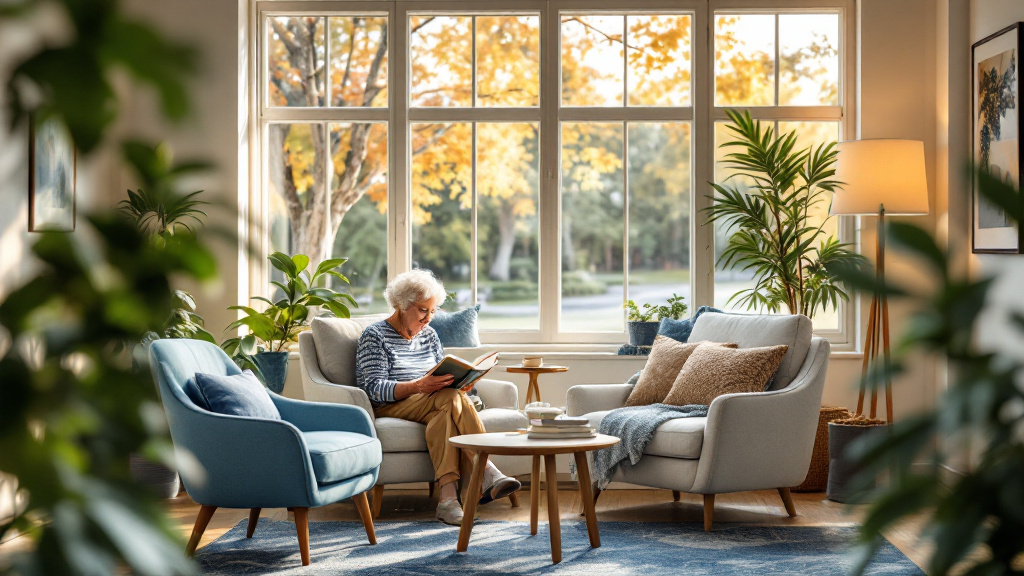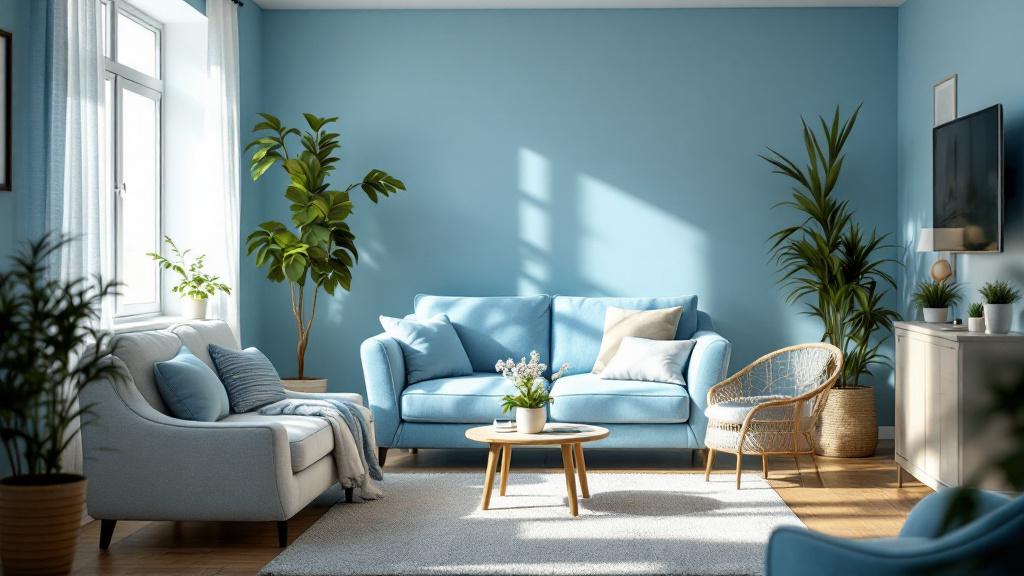
Top Tips for Home Safety for the Elderly
March 4, 2025
Discover essential home safety for the elderly with smart tips and modifications to create a secure living space.
Enhancing Home Safety

Ensuring home safety for the elderly is crucial for their well-being and independence. Various strategies can be implemented to create a secure environment that reduces risks associated with aging.
Importance of Home Modifications
Home modifications have proven to be effective interventions in preventing falls and related injuries among older adults. Key modifications include:
Modification TypePurposeZero-step entrancesEase of accessMotion-sensor lightingImproved visibilityGrab barsSupport and stabilityFurniture rearrangementClear pathways
These modifications not only assist in mobility but significantly increase the overall safety of the living space.
Creating a Safe Environment
Creating a safe environment involves both physical changes and the integration of technology. Securing the home through effective means is vital, as approximately 93% of crime experienced by adults aged 65 and older is property-related, including theft and burglary. Implementing a general home security system can provide alerts when barriers are breached or when an individual approaches entryways.
Emerging technologies, such as smart home devices, can enhance safety further. For example, motion-detection lights automatically activate when the light levels drop, effectively illuminating hallways and making navigation safer during nighttime.
Considering both necessary modifications and the implementation of technology contributes significantly to fostering a safe environment for elderly individuals. It is essential to assess the home regularly for any potential hazards and adapt the living space to meet changing needs as one ages. For further insights on elderly care, check our articles on elderly care services at home and helping elderly with technology.

Utilizing Technology for Safety
Advancements in technology play a significant role in enhancing home safety for elderly individuals. Incorporating smart home devices and emergency alert systems can greatly aid in preventing accidents and ensuring swift assistance when needed.
Smart Home Devices
Smart home devices have emerged as valuable tools for promoting safety in the homes of seniors. These devices include smart lights, which can automatically illuminate the path when motion is detected, assisting those who may have difficulty navigating in the dark. This feature is particularly crucial, as over half of all falls occur at home, emphasizing the necessity of safe living environments [2].
Other smart devices can integrate with security systems, providing alerts when doors are opened or closed, and offering surveillance capabilities to monitor activities within the home. Here are some popular smart home devices beneficial for elderly safety:
Device TypeBenefitsSmart LightsAutomatically turn on to prevent falls in the dark. (Assisting Hands)Smart ThermostatsAllow remote temperature control for comfort and safety.Smart DoorbellsProvide video access to who is at the door, enhancing security.Motion SensorsDetect movement and trigger alerts for increased awareness.
Emergency Alert Systems
Emergency alert systems are vital for seniors living independently. These systems provide a quick method for elderly individuals to get help in case of an emergency, such as a fall or health issue. A medical alert system can monitor movement throughout the home and be programmed to alert emergency services when assistance is required.
Options like smartwatches and pendants can also be utilized. These devices automatically contact family or first responders when a fall is detected, potentially saving lives by ensuring rapid action is taken [3]. Here are key features of emergency alert systems:
System TypeKey FeaturesMedical Alert SystemsMonitors motion and alerts responders during emergencies.Smartwatches with AlertsAutomatically notify contacts if a fall is detected.wearable pendantsConvenient for on-the-go alerts.
Integrating these technologies into the homes of elderly individuals not only enhances safety but also empowers them to maintain their independence. For more information on how to provide support for the elderly with technology, visit our article on helping elderly with technology.
By taking advantage of the latest technological advancements, families can ensure that their elderly loved ones live in safer environments, ultimately improving their quality of life and peace of mind.

Bathroom Safety Measures
Ensuring bathroom safety is crucial for elderly individuals. Bathrooms are common sites for falls, with incidents in this area often resulting in serious injuries. Implementing effective safety measures can greatly reduce risks.
Grab Bars Installation
Installing grab bars is one of the most effective ways to enhance safety in the bathroom. These sturdy bars provide the necessary support for elderly individuals when using the toilet or showering. It is recommended to install grab bars near the toilet, in the shower, and along any steps leading in or out of the bathroom.
According to the National Council on Aging (NCOA), using grab bars can significantly decrease the risk of falls. Some modifications may require the assistance of a health professional or housing contractor to ensure proper installation and safety for older adults.
LocationRecommended Installation Height (inches)Next to Toilet33-36Inside Shower33-36Outside Shower36-42
Non-Slip Surfaces
Another essential safety measure is the installation of non-slip surfaces. Adding non-slip gripping material to the shower or tub floor significantly reduces the chances of slipping. It is advisable to use mats specifically designed for wet areas to enhance grip.
Additionally, placing non-slip mats outside of the shower or bathtub can provide extra protection, allowing individuals to safely step out without risk. These measures can help create a safer environment in the bathroom, which is vital given that falls in this area are more likely to result in injuries than in other parts of the home [4].
For further safety improvements, consider exploring elderly care services at home that specialize in home modifications. These services can assist in creating a safer living environment for elderly individuals.
Kitchen Safety Tips
The kitchen can be a hazardous area for the elderly, so ensuring safety within this space is crucial. Two key components to focus on are conducting regular equipment checks and practicing safe habits with gas stoves.
Equipment Checks
Regular equipment checks are essential for preventing accidents in the kitchen. Older appliances can develop issues such as frayed cords or malfunctioning components. It is important to ensure that all appliances are in good working order before use. Seniors and caregivers should regularly inspect the following items:
EquipmentSafety CheckMicrowaveEnsure door closes properly and the turntable rotatesToasterCheck for any burnt residues and ensure no loose wiresBlenderVerify that the lid closes securely and the cord is intactCoffee MakerInspect for leaks and ensure the heating element works
Maintaining smoke and carbon monoxide detectors is also vital. Testing these devices monthly and replacing batteries twice a year can provide an additional layer of safety. For more tips on enhancing home safety, explore our article on elderly care services at home.
Gas Stove Precautions
Gas stoves can pose unique risks, especially for seniors. Proper precautions should be taken to minimize potential hazards. Some important safety measures include:
Fire poses a significant hazard for seniors, who may have health conditions preventing quick reactions in emergencies. It's essential to have a fire safety plan in place and know the locations of fire extinguishers. Adequate lighting in the kitchen also contributes to safety; consider adding new light fixtures or utilizing nightlights to aid visibility.
By maintaining kitchen appliances and observing safety protocols while cooking, the risks associated with the kitchen can be significantly reduced, promoting a safer environment for the elderly.
Preventing Falls
Falls pose a significant public health issue for the elderly, leading to painful injuries such as fractures and loss of mobility, as well as psychological impacts like fear of falling and decreased confidence. To ensure home safety for elderly individuals, it is vital to implement effective measures to prevent falls.
Falling Hazard Prevention
Home assessment and modification are essential steps in fall prevention. These modifications can significantly reduce the risk of accidents and injuries among older adults. The following table outlines common modifications that can enhance safety:
ModificationDescriptionZero-Step EntrancesEliminate steps at entrance points to reduce tripping hazards.Short HallwaysKeep pathways clear to prevent accidents.Motion-Sensor LightingInstall lighting that activates as someone approaches, reducing trips in poorly lit areas.Remove RugsEliminate loose rugs that can cause slipping.Add Grab Bars or RampsInstall grab bars in bathrooms and ramps for easy mobility throughout the home.Reorganize FurnishingsArrange furniture to create clearer pathways for movement.
Studies show that these modifications can be effective interventions against falls and related injuries. It is important to take these steps early, as falls are a leading cause of death among seniors in the U.S. [6].
Bed Safety Measures
Bed safety is another vital component in preventing falls among the elderly. There are several strategies to ensure that seniors can safely enter and exit their beds:
Safety MeasureDescriptionBed Height AdjustmentEnsure that the bed height is appropriate—neither too high nor too low—to facilitate easy access.Bed RailsInstall bed rails to provide support when getting in and out of bed.Non-Slip MatsPlace mats around the bed area to prevent slips when getting in or out.Clear Bedside AreaKeep the space around the bed free of clutter to reduce tripping hazards.
By addressing bed safety alongside other home modifications, caregivers can alleviate some of the dangers that come with aging. Encouraging safe practices at home not only protects seniors physically but also supports their emotional well-being by boosting their confidence and autonomy. For more information on improving overall safety, visit our section on elderly care services at home.
Addressing Medication Safety
Ensuring medication safety is a crucial aspect of home safety for the elderly. Seniors often manage multiple prescriptions, which can lead to confusion and potential medication errors. Implementing effective strategies can significantly reduce these risks.
Medication Tracking Tools
Utilizing medication tracking tools can greatly enhance adherence to prescribed regimens. Electronic medication trackers, equipped with integrated audio alarms, can assist seniors in remembering to take their medications on time. These devices help reduce the risk of dangerous medication mistakes [7].
Medication Tracker TypeFeaturesPill Organizer with TimersOrganizes pills by day/time; emits sound alarmsMobile AppsAllows reminders on smartphones; tracks dosagesSmart Pill DispensersDispenses pills at scheduled times; alerts caregivers
Incorporating such tools into daily routines can establish healthy habits and significantly improve safety for older adults.
Avoiding Mix-ups
Older adults frequently take multiple medications, leading to confusion regarding prescriptions. Implementing various strategies can prevent medication mix-ups. Techniques include:
These practices can lead to improved medication management, enhancing overall health outcomes and safety for seniors at home. For additional resources and support, consider exploring elderly care services at home available in your area.
References
[2]:
[3]:
[4]:
[5]:
[6]:
[7]:


































































































